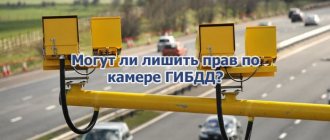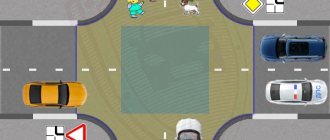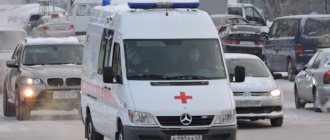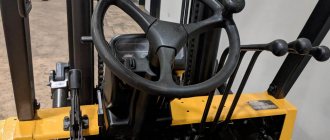What does the traffic rules say?
The traffic rules do not provide a clear definition of the concept of maneuver. However, there is a whole section (number called “Starting movement, maneuvering.” It presents examples of maneuvers and also describes the requirements for their implementation.
However, there is a whole section (number called “Starting movement, maneuvering.” It presents examples of maneuvers and also describes the requirements for their implementation.
What specifically refers to maneuvers
A maneuver is any action that is aimed at changing the trajectory of a vehicle relative to the road along which it is moving. This concept is present in the text of paragraph 1.2 of the Russian Traffic Regulations. Maneuvering rules are discussed in more detail in Section 8.
Maneuvers include:
- start of movement;
- turn;
- turn;
- changing lanes;
- detour and overtaking;
- stop;
- driving the vehicle in reverse;
- access to the sidewalk and exit to the side of the road.
The maneuver does not involve driving around a roundabout.
Maneuvering - Traffic rules establish strict standards of behavior
The collection of traffic rules has a separate large chapter devoted to maneuvering, but administrative language does not always contribute to memorization and assimilation, so we will talk about this in a more free form and, so to speak, from the everyday side of the issue. Let's start with the main thing. This is a designation for maneuvering. The rules strongly recommend that you always indicate your intentions clearly, precisely and in a timely manner . For this purpose, the car has special lights at the front and rear. If they don't work, you can do it by hand through the open side window.
The basic pattern of giving signs is that this must be done immediately before the maneuver, but not at the moment of its implementation. It is difficult to name a time interval, since it does not exist, sometimes the driving culture welcomes early signals so that those behind can change lanes and not break their pace, and sometimes signals turned on too early can mislead them. For example, you want to turn left and showed the signal too early, and there are at least three left turns in front of you, but you did not attach any importance to this. But the driver behind you will not know whether he is on the way with you or you are turning earlier, you need to change lanes and overtake, or it is more practical to wait until you turn, etc.
In addition, in no case does a timely signal give you an advantage in traffic, so when maneuvering you should respect not only the calmness of neighboring drivers, but also the principle of accident-free traffic in general. When changing lanes, you are like a guest on a new lane and road, which means you must respect the order that has already developed there. The advice of every experienced motorist is to make as few movements as possible on the road, because today the density of cars in cities, especially large ones, is so high. Therefore, think over your trajectory much in advance in order to be less likely to disturb other road users in an emergency.
Turns, U-turns and lane changes correspond to the turn indicator on the side of the car in which direction you intend to make the maneuver. When stopping, the turn signal is in the direction where you plan to lean the tired body of the car (for example, the side of the road/curb), and when starting off, in the opposite direction from the curb. Hand signals: stop - straight arm up, direction of maneuver - straight arm in the direction of the maneuver or bent arm at the elbow opposite to the maneuver.
Article on the topic: How to choose a charger for a car battery?
Standards of driver behavior when maneuvering
The driver is required to warn other motorists, motorcyclists and pedestrians that he is about to perform a maneuver. Paragraph 8.1 of the traffic rules lists maneuvers during which the turn signal must be turned on.
- Turn and turn.
- Changing lanes (including overtaking and advancing).
- Start of movement from the curb or sidewalk.
- Drive to the edge of the roadway (side) and stop.
If the turn signals do not work for some reason, the driver must signal a turn with his hand.
The driver, before starting the maneuver, must ensure that:
- it will not interfere with other road users and will not force them to change their driving trajectory;
- the turn signal is in good working order and can be seen by other drivers and pedestrians;
- the action is not prohibited on this section of the roadway.
You should always remember that the given light signal is only informative and does not provide any advantage. The turn signal must stop immediately after completing the maneuver.
You should not make excessive maneuvers unnecessarily, for example, frequently change lanes from one lane to another. Such car enthusiasts are called checkers players. They do not want to move in the general flow of cars and always strive to change lanes in order to get ahead or overtake someone. It is better to avoid such motorists, because they are likely to cause an accident.
In addition, such behavior suggests that the driver is in a state of irritation or tension, which prevents adequate behavior on the road.
Advancing and overtaking must not be prevented. There are often motorists who try to compete when they see that they want to get ahead of them. It is important to remember that the track is not a place for racing or settling disputes. If you come across a driver on the way who wants to arrange a competition, then you should let him pass without succumbing to provocation.
Changes in traffic rules of the Russian Federation
Situation 1.
In this case, the driver overtook in the area of the “overtaking prohibited” sign. Even in the complete absence of markings, such a maneuver can result in deprivation of rights. The fact is that the Rules now state that overtaking is a maneuver when a vehicle enters the oncoming lane of traffic. Everything else is advance. In the absence of markings, the lane for oncoming traffic is considered to be the one located to the left of the middle of the roadway, determined visually. In this situation, the driver of a white car violates the requirement of the road sign, enters the oncoming lane, and his actions will be qualified by the inspector under Part 4 of Article 12.15 of the Code of Administrative Offenses. It provides for deprivation of rights for 4-6 months. Ultimately the decision will be made by the court.
Situation 2.
In this picture, the car is crossing a solid lane, the crossing of which is prohibited in the Rules. Can a lane reserved for public transport moving in the opposite direction be considered an oncoming lane? Certainly. This is due to markings and signs.
Situation 3.
Traffic on tram tracks in the opposite direction. Firstly, the Rules contain a direct ban on such movement. Secondly, changes have been made to the Administrative Code. If previously such a violation was subject to a fine, now it is deprivation of the right to drive. Let's start with the fact that tram tracks in the opposite direction are also intended for the movement of oncoming wheeled vehicles. It is from them that left turns and U-turns for oncoming cars should be made. In addition, such a maneuver is dangerous for tram passengers. After all, they always walk around the tram from the front so that they can see the oncoming tram and oncoming cars. Therefore, a pedestrian simply will not see a car that is overtaking a tram. Likewise, the driver will not be able to notice in time a pedestrian jumping out from behind the tram. This is fraught with serious consequences. The legislator considered that such a maneuver should be punished in the same way as driving into the oncoming lane, which, in fact, is what it is.
Situation 4.
In the situation shown in the figure, the driver will lose his license. The Rules state that overtaking is prohibited 100 meters before a crossing. This distance can be determined not only by eye. Warning signs are installed 50, 100, 150 meters before a crossing in a populated area and 100, 200, 300 meters outside populated areas.
Situation 5.
Overtaking in areas with limited visibility is prohibited. But if there are no markings, then a sign should warn that visibility is limited. In this case, the sign is “steep climb”. The same option on a road with a sharp turn. Then a “dangerous turn” sign must be installed. It must be borne in mind that the “steep climb” sign may be installed immediately before the start of the dangerous section. A “dangerous turn” sign 50 meters away in a populated area or 150 meters away on a highway. Therefore, in the latter case, the prohibition of overtaking begins where the sign begins, and not where this sign is installed.
Situation 6.
A car is traveling in a roundabout in the opposite direction. The traffic police officers qualified this movement under Part 4 of Article 12.15 of the Administrative Code. However, there were people who challenged this classification of violation in court. Moreover, the courts agreed with their arguments and punished such a driver only for violating the requirements of the sign.
What was the problem with the situation? The fact is that Part 4 of Article 12.15 of the Code of Administrative Offenses spoke about leaving on the side of the road intended for traffic in the opposite direction. Where can you find the side of the road on a roundabout?
With the entry into force of amendments to Part 4 of Article 12.15 of the Code of Administrative Offenses, this controversial issue will go away. Now this novella sounds like this: driving into a lane of the road intended for oncoming traffic. Driving in the opposite direction in a circle is driving into oncoming traffic. Therefore, this maneuver will undoubtedly be qualified under Part 4 of Article 12.15, which provides for deprivation of rights for 4-6 months.
sanctions
Wrong turn
Now two articles are provided for this maneuver.
In the new edition of the Code of Administrative Offenses, Article 12.16 has been expanded. In its first part, liability for violation of a sign or marking is increased. It provides for a warning or a fine of 300 rubles.
Previously, in the Administrative Code, right and left turns made with violations were punishable under Part 1 of Article 12.14. For this, a warning was issued or a fine of 100 rubles was issued. This provision remains in effect. But there are situations when the violator will be subject to a higher fine or, on the contrary, will get off with less money.
Figure II
Situation 1.
If there are road signs on the road indicating traffic in lanes, or there are corresponding markings, the driver must be guided by the general provisions of the Rules of the Road. If there are markings on the roadway regulating the directions of traffic, or road signs along the lanes are installed, then failure to comply with these requirements will be qualified under Part 1 of Article 12.16. This article is a special rule in relation to article 12.14.
Situation 2.
Everything said about situation 1 also applies to situation 2. The same violations, the same punishments.
Situation 3.
In this case, where there are no markings and signs, the violation will be classified differently.
When turning or turning, the driver must take the appropriate extreme position on the roadway.
This is defined in paragraph 5 of section 8 of the Road Traffic Rules. Such a violation will be punished in accordance with Part 1 of Article 14 of Chapter 12 of the Code of Administrative Offences.
Situation 4. The rules do not prohibit crossing such markings. However, the driver violated the requirements of the Rules to take the extreme position before turning. For this, he faces a warning or a fine of 100 rubles in accordance with Part 1 of Article 12.14 of the Administrative Code.
Situations 5 and 6.
Vehicles are shown entering a lane intended for public transport in violation of signs and markings. At the moment, there is no separate article providing for liability for such actions.
The rule prohibiting such movement is in the “Priority of route vehicles” section of the Rules. It states that on the lanes intended for the movement of route vehicles, marked with appropriate signs, the movement, stopping and parking of vehicles is prohibited. Therefore, this violation is qualified under part one of Article 12.16 of the Administrative Code: violation of the requirements of road signs or markings. Responsibility for this is a warning or a fine of 300 rubles.
However, now, in accordance with the latest instructions of the president, the Code of Administrative Offenses is being finalized. Amendments have already been made regarding violations of stopping and parking rules. It is also likely that there will be a rule establishing responsibility for driving in lanes intended for public transport. There are already such proposals.
clarification
U-turn - under a separate article.
Driving in oncoming traffic was separated from turning.
The most controversial articles were separated in the Code of Administrative Offenses. Until now, driving on the opposite side and making a left turn with a U-turn were in the same article, albeit in different parts. This caused confusion not only among inspectors, but also among judges. The same maneuver on the same street was classified differently, both on the roads and in the high offices of Themis.
In accordance with the new edition of the Administrative Code, such confusion should no longer arise. Turns and U-turns are separate (Article 12.16), driving in the oncoming lane is separate (Article 12.15).
The Traffic Rules state that on dual carriageway roads with four or more lanes, it is prohibited to overtake or pass into the lane intended for oncoming traffic. Moreover, the next paragraph says that on such roads, left turns and U-turns can be made at intersections and other places where this is not prohibited by rules, signs or markings. In accordance with this norm, liability has also been changed. The new version of Article 12.16 of the Code of Administrative Offenses, Part 2, states that turning left or making a U-turn in violation of the requirements of signs or markings entails liability in the form of a fine of 1,000 to 1,500 rubles.
Figure III
Situation 1.
The diagram shows that the sign that regulates the order of movement on this section of the road prescribes driving only straight ahead. A left turn will be qualified under Part 2 of Article 12.16 of the Administrative Code.
Situation 2.
U-turn through a solid marking line. This maneuver is prohibited by marking requirements. Accordingly, this is also part 2 of Article 12.16.
Situation 3.
If lane traffic signs are installed at the intersection and the far right lane is intended for straight traffic only, then the qualification of a left turn is also legal under Part 2 of Article 12.16: turning in violation of the requirements of road signs.
Situation 4.
There is a violation of the requirements of the sign, which requires only a left turn from this lane. The car drove straight. He didn't make a turn. Consequently, this is a pure violation of the requirements of the sign, the punishment for which is provided for in Part 1 of Article 12.16 of the Administrative Code - a warning or a fine of 300 rubles.
Situation 5.
In this case, we are again dealing with a left turn in violation of the requirements of the sign and markings. You can pay for this in accordance with Part 2 of Article 12.16 of the Administrative Code, that is, a fine of 1000-1500 rubles.
Situation 6. Here, in order to make a left turn, the car had to take the extreme left position. That is, the maneuver had to start from the tram tracks in the same direction. There is a violation of the Traffic Rules. Since the driver did not take the extreme position, the qualification will be under Part 1 of Article 12.14 of the Administrative Code - a warning or a fine of 100 rubles.
Part 4 of Article 12.15 caused a huge amount of controversy due to the qualification of some reversals. The fact is that the turning trajectory is not specified in the rules. Therefore, the difficulty arose: is it considered a violation of the rules to make a U-turn along the shortest path around a lawn or boulevard? And if you count, then under what article should you qualify? Is this a violation of the rules of turning around or is it still driving into the oncoming lane. The amendments to the code leave no doubt.
Situation A.
There is no violation of the rules.
Situation B.
In this case, there are two intersections on the road. Having left one of them, the driver found himself in the lane of oncoming traffic, which is prohibited by the rules. Therefore, his maneuver will be qualified under Part 4 of Article 12.15 of the Administrative Code.
question
Reversing to a fine
One-way streets will bring unpleasant surprises to drivers
In the 12th chapter of the Code of Administrative Offences, a novella dedicated to one-way traffic appeared. Unfortunately, it can raise a lot of questions about its interpretation in practice.
One-way traffic is regulated only by the presence of road signs, so the legislator has established a separate offense for this violation. That is, I allocated Article 12.16 to Part 3. Until now, such a violation was assessed under Part 4 of Article 12.15 - driving on the side of the road in the opposite direction.
The new article retains the old sanction - deprivation of the right to drive for 4 to 6 months - and provides for an alternative type of punishment in the form of a fine. True, the maximum fine is 5,000 rubles. What caused this? The fact that in most Russian cities we are still actively changing the organization of traffic in order to increase traffic capacity, including the introduction of one-way traffic. But our people often move not according to rules and signs, but according to memory. There is no intention in this and there is no serious violation, therefore the legislator has provided for some mitigation, and such primary violations will be punishable by a fine.
Figure IV
Situation 1.
The driver has passed a “no entry” sign and is driving down a one-way street. For this, the sanction provided for in Part 3 of Article 12.16 of the Code of Administrative Offenses will be applied to him. The inspector will detain the license, and the court will decide on the punishment.
Situation 2.
A man turns onto a one-way street under a “No Entry” sign. His actions also fall under Part 3 of Article 12.16.
Situation 3.
Our rules clearly state in which cases reversing is prohibited. Part 3 of Article 12.16 deals with ordinary traffic. Reversing refers to maneuvering on a par with turning and turning. Therefore, it does not matter whether you are driving in reverse on a one-way or two-way street - this maneuver cannot be classified as driving in the opposite direction. Therefore, on such roads, reversing will be a violation only if it occurs at an intersection.
Situations 4 and 5.
Reversing when there is a violation of the rules, namely at an intersection. This maneuver will be qualified under Part 2 of Article 12.14 of the Administrative Code - a warning or a fine of 100 rubles.
Situation 6.
U-turn at the intersection with a one-way street. A U-turn occurs at an intersection. Upon completion of the maneuver, the car is not in the lane intended for oncoming traffic, and therefore there is no violation.
innovation
Paying for an obstacle
The concept of “obstacle” has appeared in the traffic rules. Until now, it has appeared everywhere in the text, but nowhere has it been explained what it is.
This is a stationary object in the lane (faulty or damaged vehicle, defect in the roadway, foreign objects, etc.) that does not allow further movement along this lane. However, the rules stipulate that a traffic jam or a vehicle stopped in this lane in accordance with the requirements of the rules is not an obstacle.
Figure IVa
For example, a bus unloading passengers is not an obstacle. Therefore, if you go around it through a continuous road, you will lose your license (situation A). But if you drive around a broken down car on the left side through a double solid road, you will only face a fine under Part 3 of Article 12.15 of the Administrative Code - from 1000 to 1500 rubles (situation B).
rule
Sometimes the markings are more important than the sign.
Prohibited overtaking now has exceptions.
Now, within the coverage area of the “no overtaking” sign, you can overtake horse-drawn carts, motorcycles without sidecars and slow-moving vehicles. However, this exception can be very treacherous on the road.
For example, what is a slow-moving vehicle? This is not a car that drives slowly, it is a vehicle whose design speed does not exceed 30 km/h. Such a slow-moving vehicle is designated with a special sign - a triangle with a red coating and a yellow border. If there is no such symbol on the tractor, it means that you cannot overtake it under the “no overtaking” sign.
Figure V
Situation 1.
If the vehicle you intend to overtake has a sign indicating a slow-moving vehicle, it means that, despite the fact that the overtaking maneuver is taking place within the area of effect of the prohibiting sign, there is no violation in this situation.
Situation 2.
There is a temporary sign on the road prohibiting overtaking. And although it contradicts the markings, the Rules stipulate precisely the advantage of the sign over the markings. However, overtaking a slow-moving vehicle is permitted here.
Situation 3.
In the area covered by the “no overtaking” sign, it is allowed to overtake motorcycles without sidecars and mopeds.
Situation 4.
The tractor has a sign “speed limit 30 km/h”. When overtaking it, you must remember that this sign only indicates that this vehicle can move without exceeding this limit. However, this does not mean that this vehicle is slow-moving. Therefore, for such overtaking you may be charged under Part 4 of Article 12.15 of the Administrative Code and deprived of your license for 4-6 months.
Situation 5.
You are driving behind a vehicle designated as slow-moving on a road that has one lane in each direction. There is a continuous marking line on the road. You cannot perform maneuvers that involve crossing this line. Otherwise, you will be liable in the form of deprivation of the right to drive for entering the road lane intended for oncoming traffic. After all, there are no exceptions to the rules for a continuous marking line. It is prohibited to cross it in any situation: there is a sign, there is no sign, it is a slow-moving vehicle or not. And the “Overtaking prohibited” sign on the road should not mislead or confuse you.
Situation 6.
It is almost similar to the previous case. The only difference is that there is no “no overtaking” sign. It is still prohibited to cross the solid marking line. And the exception for slow-moving vehicles is made only for the sign, and not for any case of prohibition of overtaking.
attention
Let's go in a circle
The new rules not only clarify the terms, but also introduce new features for driving through intersections.
Several new concepts have appeared in the Rules. For example, “daytime running lights”. They are installed on new European cars. Typically these are high-brightness LEDs that frame or highlight the headlight. If we were still required to drive on country roads with low beams on, now an exception has been added to the Rules: “or with daytime running lights on.” At the same time, owners of this equipment may no longer turn on the low beam headlights.
By the way, in the new edition of the Rules, low beams or these lights must be turned on when driving not only outside the city, but also in populated areas. That is, everywhere and always.
Particular attention should be paid to the point regarding the Rules for driving through roundabouts. When the Rules were first published, it was widely believed that traffic would change at all such intersections. If until now drivers used the rule of interference on the right, now those who move in a circle will have priority in roundabouts. This statement is not entirely true.
The Rules clearly state: if “give way” or “passage without stopping is prohibited” signs are installed on a roundabout, then in this situation vehicles located on the roundabout have priority. That is, those entering the intersection must give way to them. Moreover, the driver who has entered the circle will already know for sure that he has the advantage in traffic.
By the way, the practice of using such a system has shown that the intersection is quickly cleared, and its capacity increases accordingly.
If such signs are not installed, then the “interference on the right” rule is still in effect at this intersection. And here those who are moving in a circle must give way to those who are entering the intersection. There is a need to organize the movement in this way.
It must be said that the current wording of this paragraph of the rules is fully consistent with the International Convention on Road Traffic. That is, it fully complies with Western requirements.
At first, drivers are advised to carefully look not only at the signs in front of the circle, but also at the behavior of other road users. It is clear that not everyone will know them immediately after the amendments to the Road Traffic Rules come into force. In addition, we have a developed tradition of driving not according to rules and signs, but out of habit and memory. Be careful on the roads.
All diagrams depict “ideal” cases. In this case, the circumstances of the commission of a particular violation are not taken into account. In practice, these circumstances are often important for qualifying a violation. Therefore, if your case is not ideal, and the inspector has classified it under a different article than in the proposed schemes, then you will have to deal with it in court.
Download:
1. Full table of traffic police fines 2015 >>> Please Login or Register to access this content
Where and what types of maneuvers can be performed
You should be careful about the prohibitions on performing a particular maneuver on a certain section of the road. For example, turning around and moving backwards are prohibited:
- In the tunnels.
- At pedestrian crossings.
- At railway crossings.
- If there is a marking 1.18, which prohibits turning left.
- On bridges, overpasses, guideways, and also under them.
- When visibility is poor, less than 100 meters in one direction, including in places with steep slopes that limit visibility.
- At stops designated for public transport.
- Reversing is prohibited on motorways.
- If there are road signs prohibiting U-turns and left turns.
If, when turning right or changing lanes to the right, another car turns left (changes lanes) at the same time, then you should follow the right-hand rule, that is, let it pass. All turns are made in such a way that the vehicle does not end up in the lane of oncoming traffic and does not create an obstacle.
It is undesirable to occupy tram tracks, since “the tram is always right” and motorists have no right to interfere with it. You can drive onto tram tracks only in special cases, for example, when turning left, taking into account the absence of a turn lane and corresponding signs.
Maneuver: definition in traffic rules
There is no definition or description of the term “maneuver” in the traffic rules, but paragraph 8 lists everything that relates to it:
- turns and reversals;
- rebuilding;
- overtaking and advancing;
- avoiding obstacles;
- starting and stopping;
- driving in reverse gear.
The basic rules in accordance with which maneuvering actions should be carried out are also given there:
- how to warn others about your intentions;
- where they can and cannot be performed;
- to whom and when to give in.
Code of Conduct
In addition to the rules prescribed in the traffic rules, when performing maneuvers it is important to keep in mind other mandatory points, neglect of which can lead to an accident:
- You need to maneuver only when it is really necessary, that is, for example, do not change lanes unnecessarily, do not get ahead of other vehicles;
- You should not organize a competition on the road, preventing you from overtaking or getting ahead of yourself;
- it should be understood that the other driver may make a mistake, not see the signal, break the rules, and maneuver with an eye on this, that is, look in the rearview mirror.
Compliance with these standards will help to avoid an accident if motorists or pedestrians act incorrectly, at least with the help of emergency braking.
Hand signals
In the absence of turn signals or a malfunction, signals to change the direction of movement are given by hand:
- If you need to turn left or turn around, use the left one. It is pulled in the appropriate direction, bent at the elbow and pointing the hand upward.
- If necessary, turn to the right using the right hand. The gesture is similar to the previous case, but directed in the appropriate direction.
- If you need to slow down and stop, the driver raises his left arm without bending it at the elbow. When driving a right-hand drive car, the gesture is performed with the right hand.
Selecting a lane to turn (turn)
To turn, it is necessary to move the vehicle in advance to the outer lane corresponding to the direction of the changed movement; the safety of the maneuver depends on this. To depart to the right, the right lane is correct. For a left turn - left, as for a U-turn. But there are also some nuances here:
- If there are signs 5.15.1, 5.15.2 on the lanes, you need to drive as the arrows point to them. That is, clause 8.5 does not work here. The same should be done if there are 1.8 markings separating the braking or acceleration lanes.
- A U-turn at an intersection, if permitted, is in all cases made from the far left lane. The rule works even if there are signs regulating traffic in lanes.
- If you are turning to move to a roundabout, you can occupy any lane in front of it. But leaving the site is only allowed from the far right.
- When turning from the road to the adjacent territory, you need to occupy the appropriate outer lane. After all, there are no symbols 5.15.1 and 5.15.2, markup 1.8.
- Before turning in any direction and making a U-turn, it is not enough to move to the desired lane. It is also necessary to take a position there so that another vehicle does not end up in the same lane, but to the right. And if you need to turn left, turn around, then there shouldn’t be anyone to the left at that moment.
If the turn is made at an intersection, then the maneuver must be completed in your own lane; you cannot do it in the oncoming lane.
Watch this video about the rules for performing a turn:
Turn left (U-turn) on a road with tram tracks
Regarding left turns and U-turns, if there are tram rails nearby, paragraph 8.5 says the following:
If there are tram tracks in the same direction on the left, located at the same level as the roadway, a left turn and a U-turn must be made from them, unless signs 5.15.1 or 5.15.2 or markings 1.18 prescribe a different movement order. In this case, there should be no interference with the tram.
In practice it works like this:
- if there are signs 5.15.1 or 5.15.2 on the site, the maneuver is carried out in accordance with their requirements, that is, not from the tram tracks;
- in the absence of road symbols, left turns and U-turns are performed after moving onto the rails;
- You must give way to passing trams.
Turning and reversing
Turning around and driving in reverse is changing the trajectory to the opposite one, but in different ways. Each action has its own characteristics, the first is performed as follows:
- with the left turn signal on;
- with moving in advance to the leftmost lane or to the same position on a single-lane road;
- Always outside the intersection, giving way to all oncoming cars, passing cars, those going straight ahead, as well as trams.
Sometimes you can turn around from the far right position of the vehicle, but this will not entail a penalty unless the road is narrow. Under the same circumstances, it is permitted to use the adjacent territory:
- If it is on the right, you need to proceed past the entrance, stopping in the middle of this segment. Then put the vehicle in reverse, climb onto the adjacent area backwards and turn left. All other turning rules must be followed.
- If the adjacent zone is located on the left, you must first turn there using the normal method of movement. After this, put the car in reverse and drive in the direction opposite to the one you want to go. Then they turn left, after which you can go straight. All this is done without interfering with oncoming and passing cars or pedestrians.
Places where turning is prohibited
You cannot turn around in the places listed in clause 8.11 of the traffic rules:
U-turn is prohibited:
- at pedestrian crossings;
- in tunnels;
- on bridges, overpasses, overpasses and under them;
- at railway crossings;
- in places where visibility of the road in at least one direction is less than 100 m;
- in places where route vehicles stop.
In addition, you cannot perform a maneuver under the signs:
- 4.1.1, 4.1.2, 4.1.4 if they are at an intersection. It is prohibited to turn around at the first intersection of roadways.
- 5.15.1, 5.15.2, if there is no arrow pointing to the left. They prohibit maneuvering at the entire intersection.
- 3.19 if he is standing at an intersection or outside it. In the first case, the ban also applies to the entire area, and not just the nearest intersection.
- 4.1.1, 5.1, 5.3, 5.5, 5.11 if they are outside the intersection. Here the ban on turning around is absolute.
Markings 1.8, 1.1, 1.3, 1.9, and also 1.11 do not allow maneuvering if its continuous component is closer to the vehicle than the dotted one. After all, crossing solid lines is a serious violation.
Reversing
Driving in reverse gear is a dangerous maneuver, it is regulated by clause 8.12 of the traffic rules:
Reversing a vehicle is permitted provided that this maneuver is safe and does not interfere with other road users. If necessary, the driver must seek the help of others.
The rule also works when reverse gear is engaged to turn around. You cannot use this method of driving at intersections (an intersection entering an adjacent territory does not count) and where traffic regulations prohibit turning around. However, you are allowed to reverse along a one-way section if there is a serious reason for this.
What road signs should you pay attention to?
You need to make sure that there are no signs that prohibit this or that action.
- turning right is prohibited at signs 3.18.1, 4.1.1, 4.1.3, 4.1.5, 5.7.2, 5.13.2, as well as signs 3.2 or 3.3 with a sign 8.3.1.;
- turning left and turning around are not allowed with signs 3.18.2, 4.1.1, 4.1.2, 4.1.4, 5.7.1, 5.13.1, 6.3.1, 6.3.2, as well as signs 3.2 or 3.3 with a sign 8.3.2 , as well as 5.15.1 or 5.15.2, on which there is no left turn arrow, or markings corresponding to these signs 1.18.;
- overtaking is not allowed where sign 3.20 is installed.
Dangerous moments during maneuvers
Maneuvering always carries danger, mostly resulting from driver inattention and miscommunication. To avoid a collision, you should always warn about your further actions in advance.
Likewise, you need to keep an eye on what other motorists are going to do. You should always keep your distance from other cars so that you don’t drive into a vehicle during sudden or emergency braking.
The danger when driving backwards is that blind spots may occur. In this case, you need to resort to the help of third parties, that is, ask a person to orient you from the street. In any case, such a maneuver requires caution and slowness. It’s better to get out of the car and look around once again than to repair the car.
Special cases
If there are many lanes on the road, then maneuvers are carried out as follows:
| Did not find an answer to your question? Call a lawyer! Moscow: +7 (499) 110-89-42 St. Petersburg: +7 (812) 385-56-34 Russia: +7 (499) 755-96-84 |
- Turn right - from the far right lane to the far right lane of the cross road.
- Turn left and make a U-turn - from the leftmost lane to any lane intended for traffic in a given direction (not to the oncoming lane).
Special cases include meeting vehicles with flashing lights and a sound signal turned on. If such a car is driving, then you should let it pass, and perform the maneuver only if it does not interfere with the passage of the vehicle.








